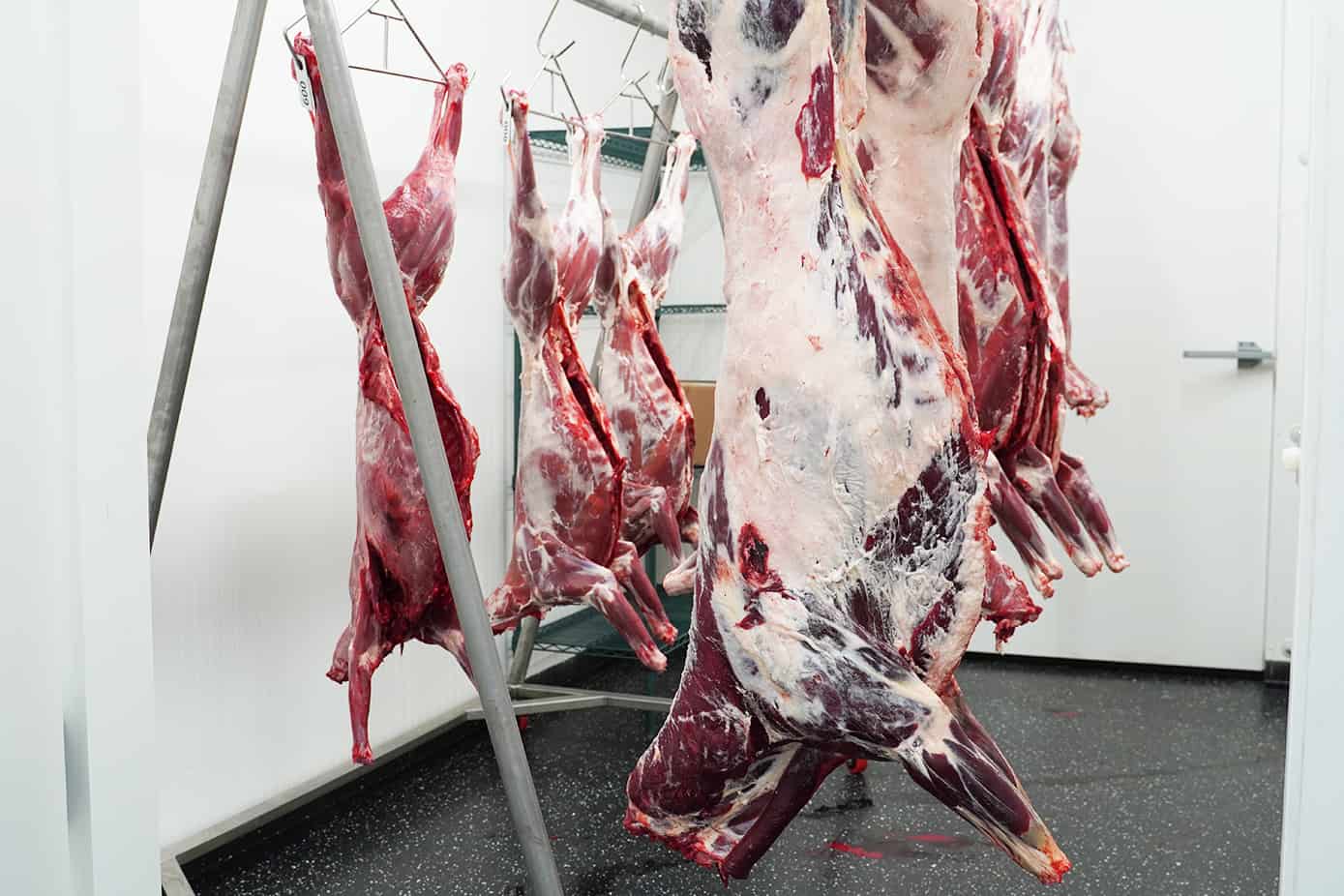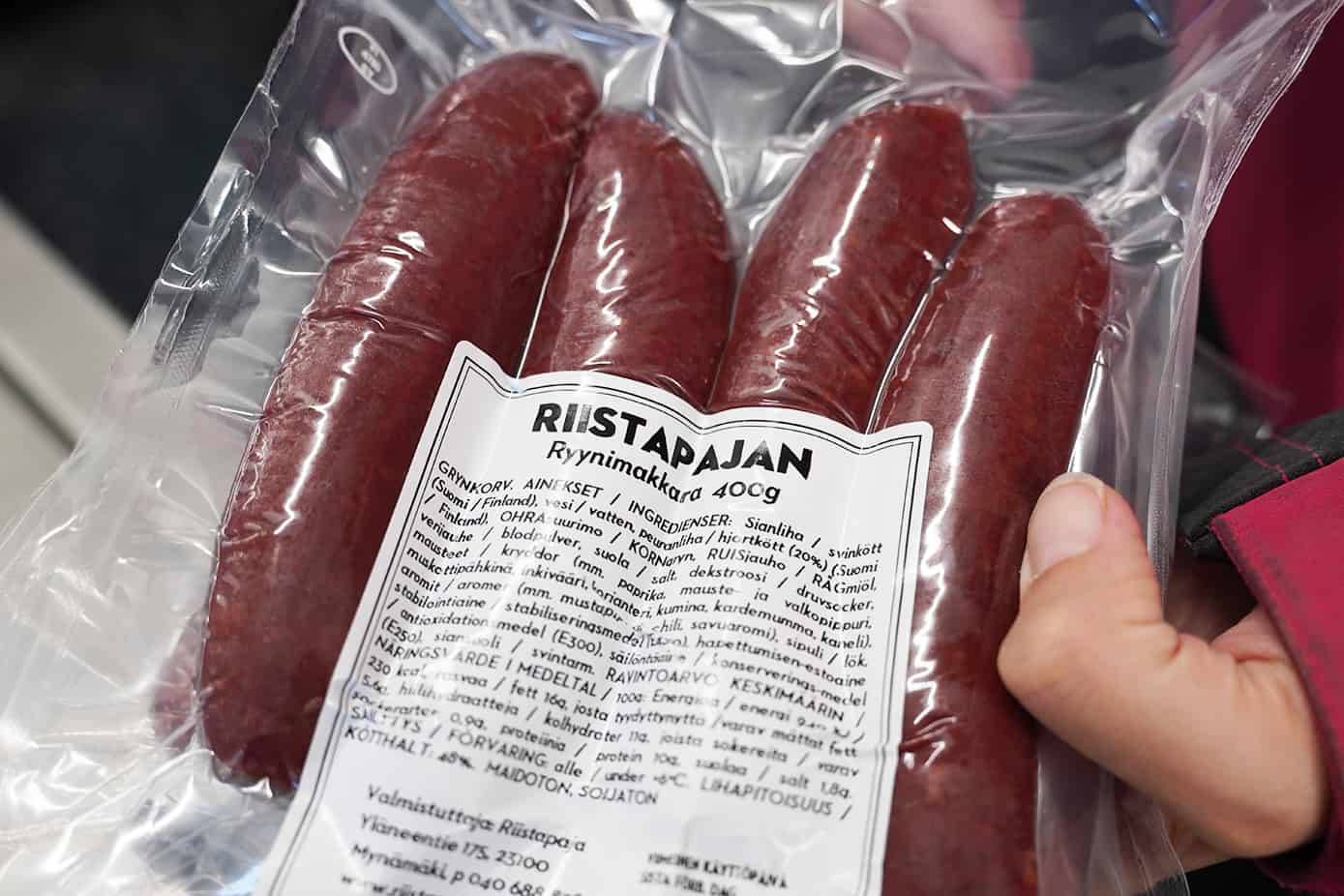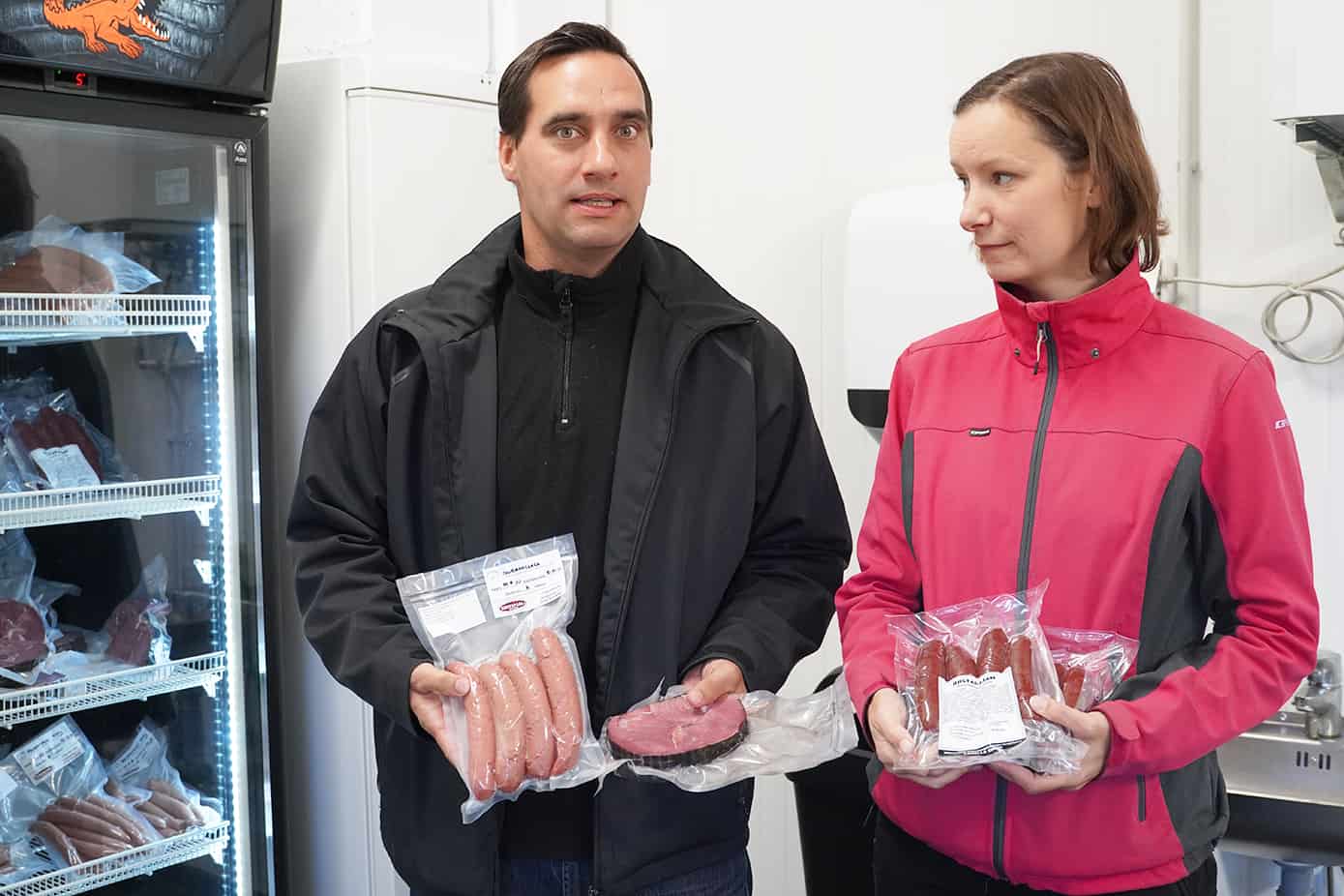The white-tailed deer was introduced in Finland in the 1930s. Nowadays the growing deer populations in the southwestern Finland have given a lot of trouble in the region. There are over 100,000 deer, and in some areas, fields need to be fenced in and collisions with deer are becoming more and more frequent numbering in thousands a year. A couple from Mynämäki came up with an idea to increase the demand for deer meat.
Hunting season has started again, which means that at Riistapaja in Mynämäki, deer carcasses are flayed into the night. The company founded by Ville and Saara Kalluinen a year ago has found clientele from near and far, because similar game inspection facilities cannot be found in the vicinity.
The business idea was that the hunters can bring their kills to Riistapaja where a veterinarian inspects and stamps the carcasses. Today, for example, the food processing industry, commercial kitchens and shops as well as most of the restaurants only buy meat inspected by a veterinarian.
– When deer populations grew to be enormous also the number of hunting licenses was increased to keep the population in check. Many hunters, however, kill only one deer as it fills one’s own freezer. The sale of deer meat has previously been so difficult that the hunters have not felt motivated to kill more than one can eat oneself, the long–term hunter Ville Kalluinen, who is involved in Riistapaja business, explains.

Riistapaja can act as the middleman between the hunter and the buyer, but Riistapaja buys and sells meat as well. Ville flays the animals and cuts the meat, Saara in turn, is responsible for the marketing operations.
– Last year we sold a lot of deer as carcasses, but nowadays buyers prefer cut pieces, like fillets. If we only sell the fillets, we can make sausages of the leftover cut meat. We cooperate with companies like Perniön Liha and Auran Palvituote. In our assortment we have, for example, sausages, sausages made with groats, and cured meat, Saara Kalluinen says.
The deer population in Mynämäki is big, but the population in Loimaa region is even bigger. The biggest part of Riistapaja’s customers come from the Finland Proper region and Satakunta, but every now and then, game is brought in from Pirkanmaa and Uusimaa. In addition to dealing with deer, Riistapaja deals with elk and roe deer.
Only first-rate products

The restaurants have been satisfied with the quality of meat. Riistapaja sells only first-rate products. If there is even a slightest risk of the meat being off specification, it is not sold. For example, Riistapaja does not accept collision animals at all, because experience has shown that the meat of collision animals is contaminated without exception. Even though the animal might look perfectly all right from the outside, the entrails have often been broken.
– The highest quality is acquired when a skilled hunter shoots a clean shot to the lung of the animal, then the animal dies quickly and the blood flows from the muscles to the lungs, Ville Kalluinen explains.
Many customers want to buy the meat directly from Riistapaja, as without middlemen the price-quality quota is better. To the day only the restaurants from the neighbouring communities have ordered game, but recently some sample batches have been sent to Helsinki too.
From onion storage to abattoir

Riistapaja was founded as a part of the Kalluinen farm. Handling game was easy to incorporate to the functions of the farm, grain growing and hennery, as the hunting season usually starts when harvesting is done.
The facilities of Riistapaja were built into the old onion storage. Leader Ravakka subsidised the investment costs, and the facilities were built at once according to the directives of Finnish Food Authority.
The building was finished in October 2019, so we have been in operation for a year or so, the couple Kalluinen says.
Deer meat is a wonderful cooking ingredient

The meat eaten in the Kalluinen family is predominantly game. Game is used even in the most common dishes like meat and macaroni, meat sauces and stews.
– Now we have learnt new recipes, for example, smoked topside roast and salted deer. The salted deer was so tasty that Ville hardly recognised the meat as deer at all, Saara laughs.
– For the past 40 years I have eaten mainly elk and deer meat for meat, so I might have had my fill, Ville clarifies.
Deer meat is tender and contains a lot of minerals and microelements of nutrients. It has, for example, less fat than pork and it is more environmentally friendly.

Text: Janica Vilen
Translation: Sirkku Viitanen-Vanamo

